Soldiers patrol Chilean capital after violent protests
Santiago is the latest city to fall prey to violent uprisings as tech-savvy youths set the city’s transport system on fire and clashed with riot police over fare increases.
Soldiers are patrolling the streets in Chile’s capital for the first time since the military dictatorship of General Augusto Pinochet ended in 1990.
The visible military presence is part of a state of emergency declared by Chilean president Sebastian Pinera in response to student-led protests over a rise in train fares that have paralysed the city.
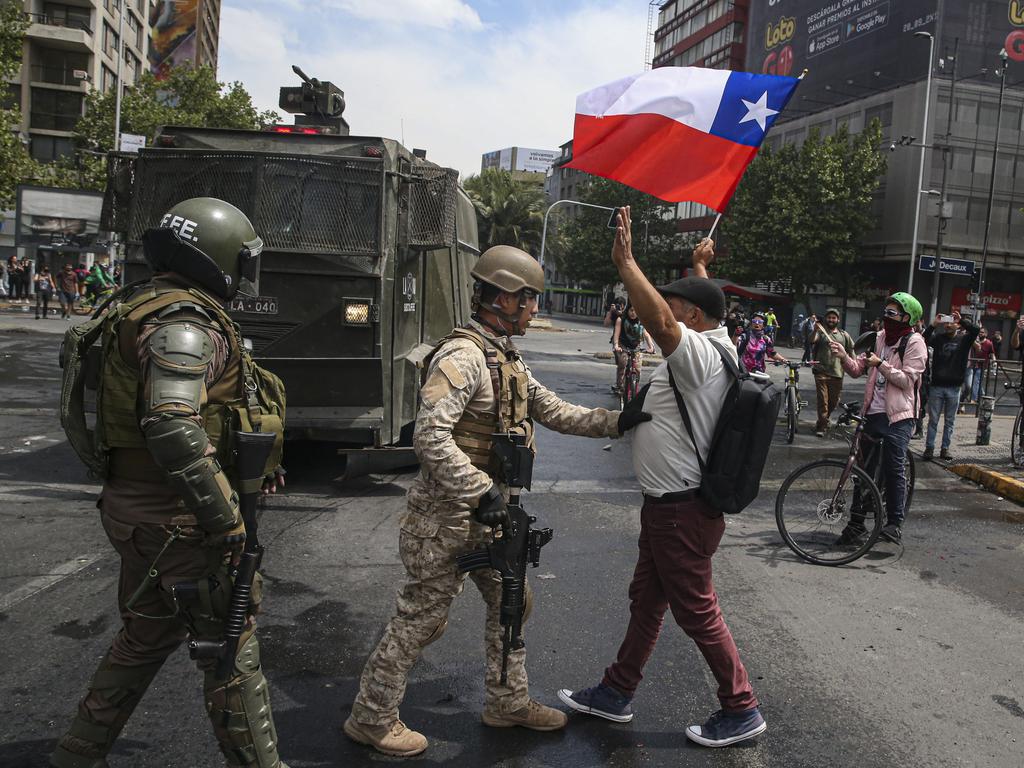
The government recently raised subway fares from about $US1.12 to $US1.16 ($A1.69) due to rising fuel prices.
Protesters set several subway stations ablaze and damaged dozens of others.
Officials reported 156 police officers and 11 civilians have been injured and more than 300 people have been arrested.
The streets of Santiago were calmer on Saturday morning, but new protests broke out at midday and police fired tear gas to break them up.
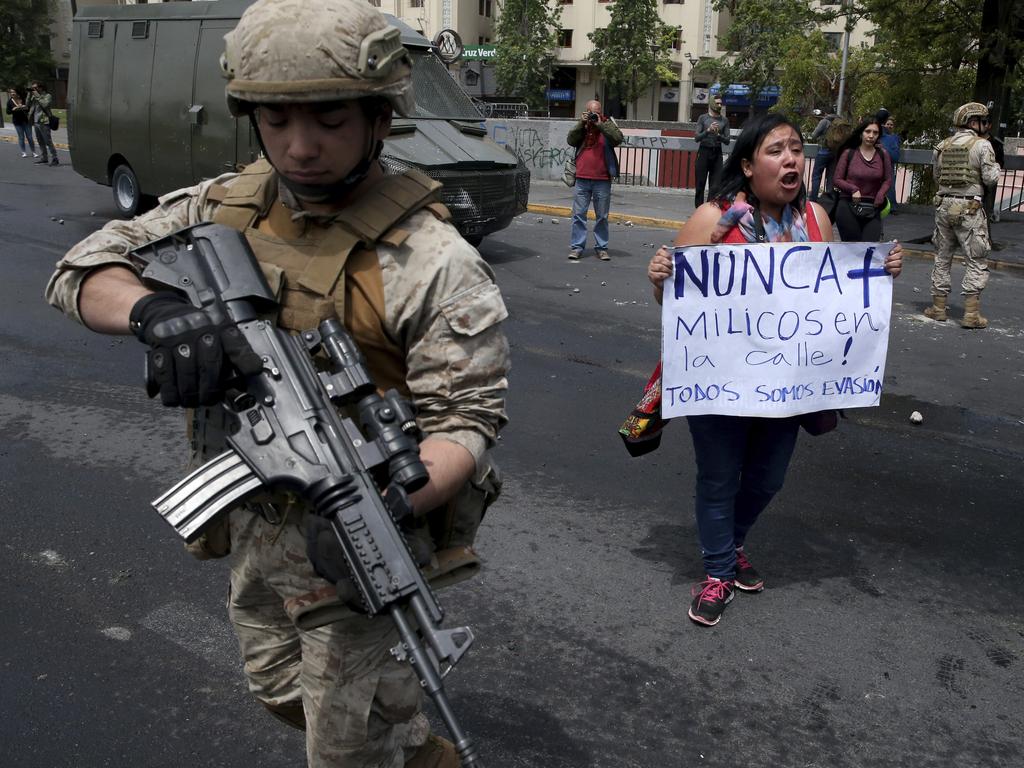
In a noisy but peaceful continuation of violent protests that prompted the government to declare a state of emergency, Chileans angry over social and economic woes banged pots and pans Saturday — a typically Latin American form of protest.
A day after the worst violence in Santiago in years, people woke to a ravaged city as burnt-out buses, bikes and garbage littered streets patrolled by soldiers — the first such deployment in decades.
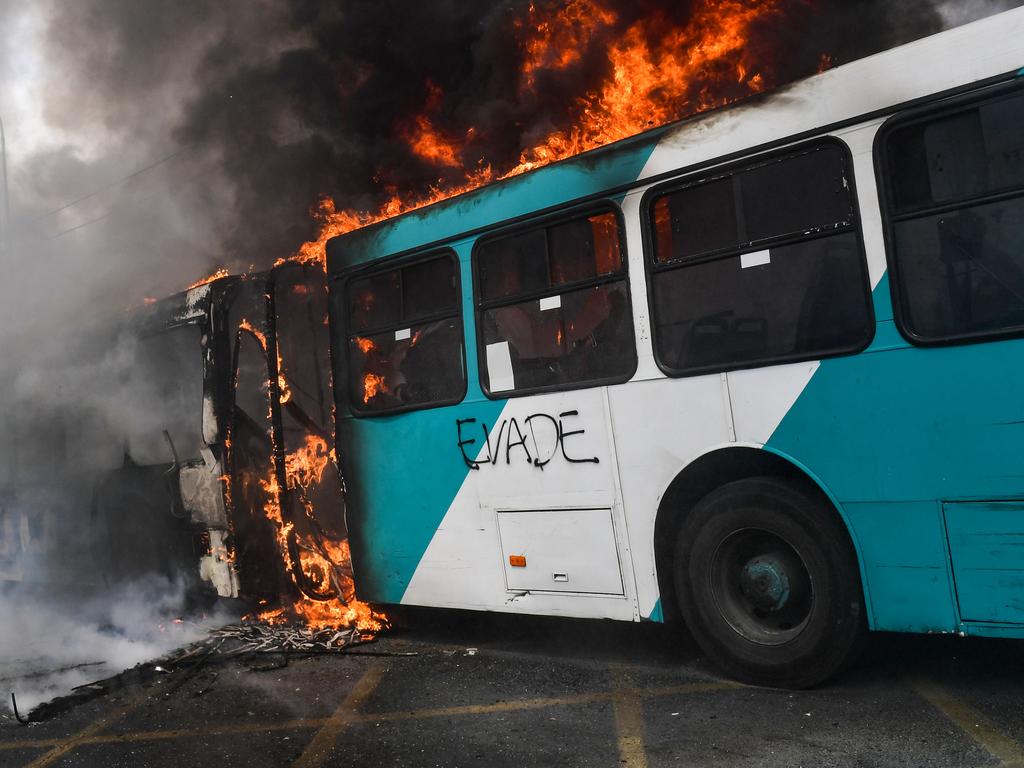
In other cities such as Vina del Mar and Valparaiso, people took to the streets and shouted slogans against the conservative government of President Sebastian Pinera. But there was no violence.
While the unrest was triggered by an increase in metro fares, it reflects a much broader anger over worsening economic and social conditions in Chile.
In a country often considered to be one of the more stable and prosperous of Latin America, the gap between rich and poor continues to widen.
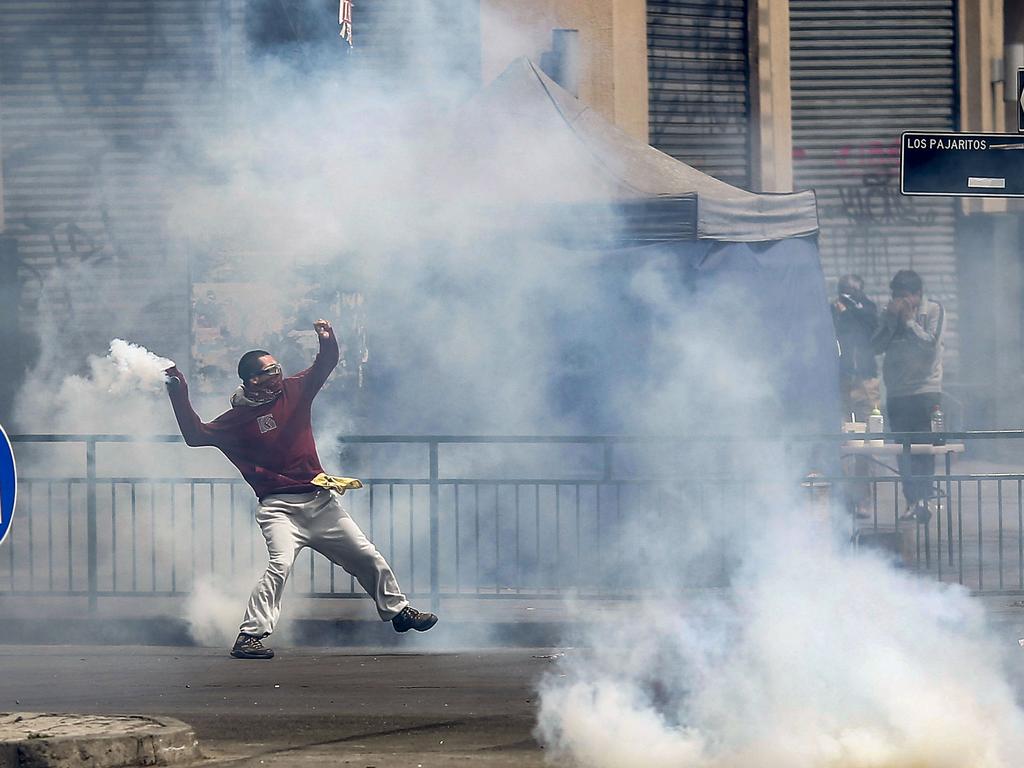
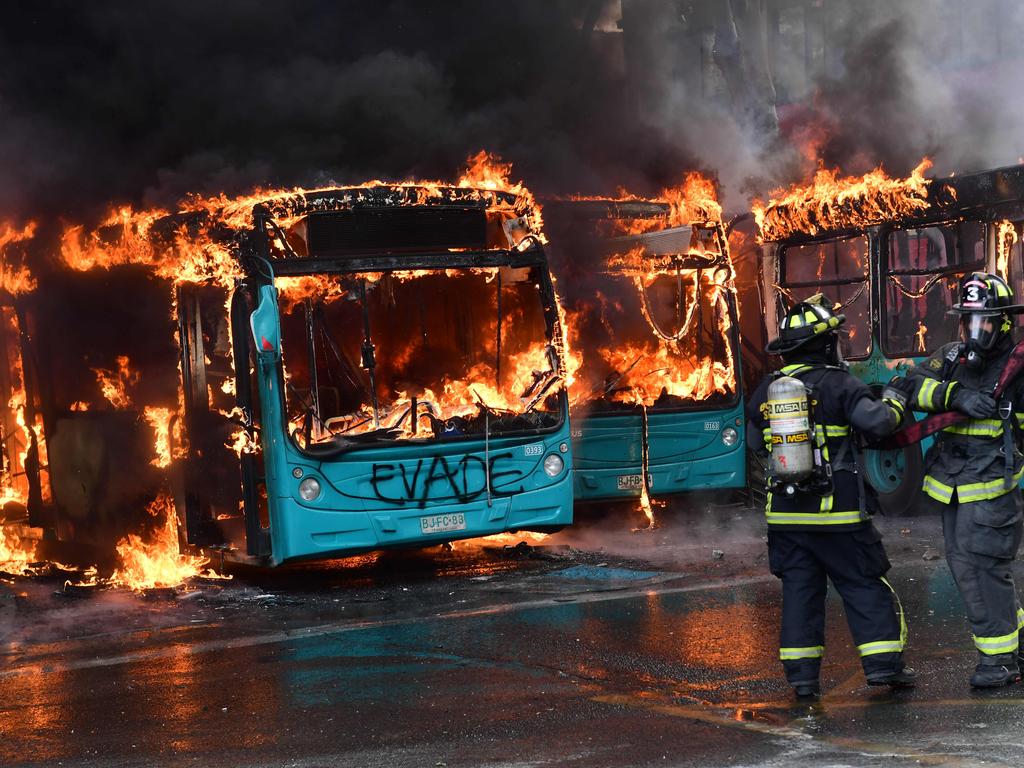
A WAY OF BEING HEARD
“It is sad, but this destruction was people’s way of demanding they be heard. Chile was a pressure cooker, and it exploded in the worst way,” said a civil servant who gave her name only Maria, waiting to catch a bus amid the detritus of Friday’s protests as some 500 soldiers patrolled the streets.

In Plaza Italia, which was ground zero of Friday’s violence, police used water cannons to disperse a small group of protesters. The same thing happened outside the presidential palace.
A total of 41 trains stations were destroyed, some completely charred and smashed beyond recognition.
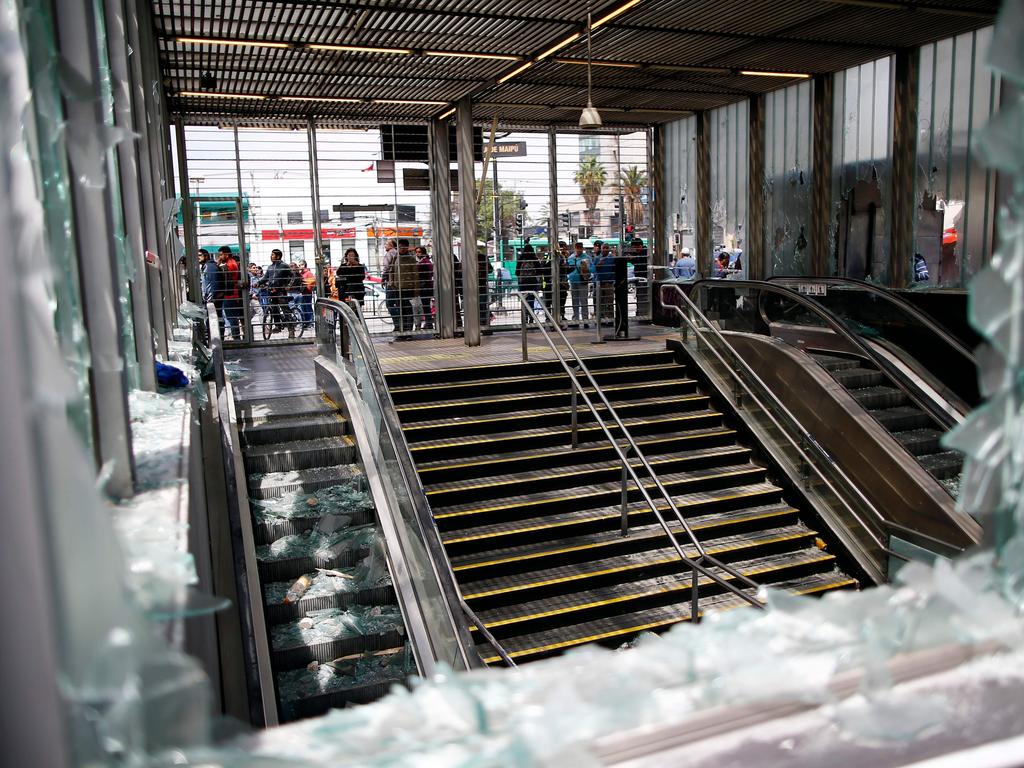
The system was closed altogether on Saturday, and no one knows when it will reopen.
The Santiago Metro rail system, at 140 kilometres, is the largest and most modern in South America and a source of great pride for Chileans.
More than 300 people were arrested, and 156 police were injured, as were 11 civilians.
The state of emergency is initially set for 15 days and restricts freedom of movement and assembly.
Due to the emergency, the National Football Association has suspended matches this weekend.

MORE NEWS
Plotting MPs scuttle Boris’s Brexit dream
Murky truth about Queen’s millions
Gaga’s entire body X-ray after fall
TECH-SAVVY YOUNG CHILEANS FUEL PROTESTS
The headquarters of the ENEL Chile power company and a Banco Chile branch — both in the city centre — were set on fire and heavily damaged.
Barricades were erected in several parts of the city, and masked protesters armed with sticks and stones clashed with riot police.
There had been several fare-dodging actions in recent days, organised on social media, but the protests escalated Friday, tapping into general discontent among many Chileans.
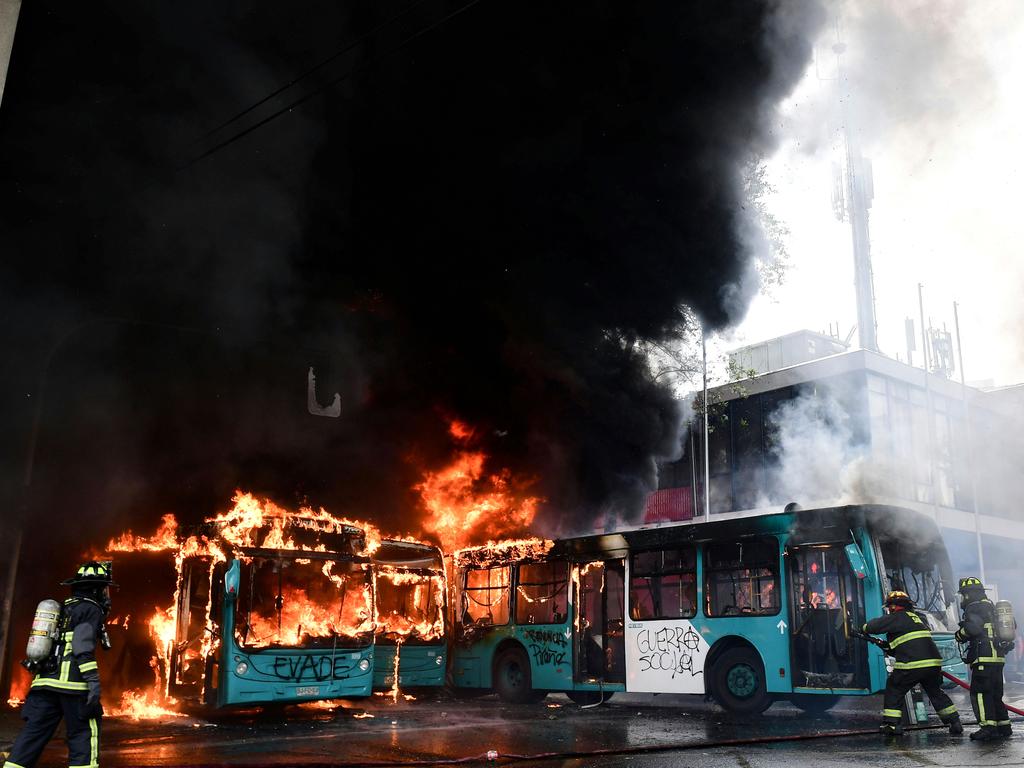
And yet Chile has the highest per capita income of Latin America at US$20,000 ($A29,000) with expected economic growth this year of 2.5 per cent and just two per cent inflation.
But frustration with rising health care and utility costs, low pensions and social inequality, as well as a concern for the future of democracy have sparked this stunning unrest.
The movement has also been fuelled by tech-savvy younger Chileans, who did not live through that dark Pinochet period, are leading the current protests.
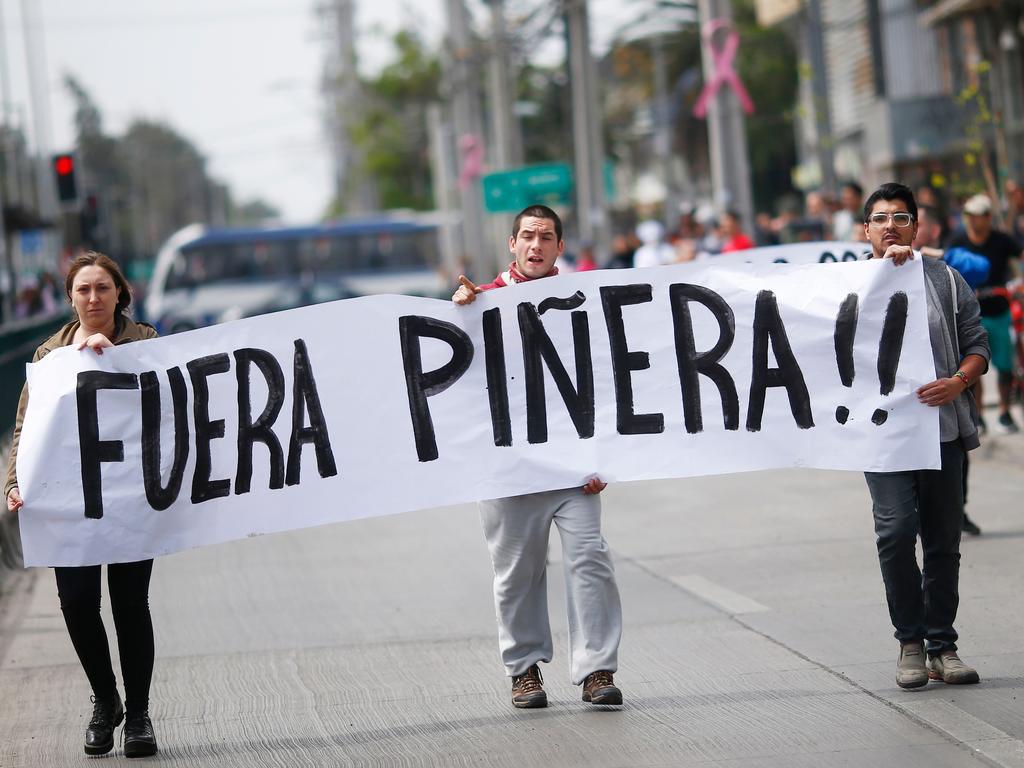
“I think social media explains the co-ordination and synchronised nature of the actions that destroyed infrastructure yesterday,” said Santiago Marcelo Mella, an analyst at the University of Santiago.
He said the government was “perplexed and dazed” by the eruption of violence, and this “must make us think about the quality of the intelligence services.
“One gets the feeling that the government reacted too slowly,” he said.



